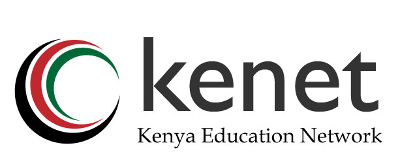You are here
'e-Resolutions' to consider in 2018
The new year is here, and with it come a myriad of resolutions. Equally important is what I term as e-resolutions, coined to mean goals for your information and networking systems. It is crucial, not just for education and research institutions, but for any organizations and the individuals affiliated to them to consider resolutions for their information and communication technologies and habits. The plans you have made in the ICT front will in turn determine how your institution thrives.
1. Safety first
In 2017, a wave of cyberattacks hit the world reminding us of the vulnerability of our data, and the sophistication and expertise of criminals to spread malware (malicious software) or steal data. Last year, the WannaCry ransomware (an advanced malware) swept 150 countries. The Internet of things and the global cyberspace requires that security not be a gamble. In fact, priority should be made to ensure that you or your institution has patched up any security gaps. There are colossal measures you can take to ensure safety such as having strong spam filters to authenticate e-mails and avoid phishing, backing up your files, installing an antivirus, updating all devices, softwares and plug-ins on a regular basis, and educating yourself and staff on the latest trends and advances.
2. Open Research Data
Research begets research, and more research. Hence, making your research accessible increases exposure of research data. Already, research repositories are improving practitioners’ access to research data. For instance, the KENET Open Access Data Repository (OADR) allows public access to Kenyan research data. Research data is increasingly being created in digital form and repositories provide the means for collecting the data that underpin peer-reviewed articles. As an author, you should consider making your work available. More and more research funders are requiring their grant-holders to make their data Open Access, once they have analyzed and published their findings from the data.
3. New year, new data
There is no doubt that data has reshaped today’s world, and continues to do so. Data is everywhere. More importantly, making data-driven decisions determines and predicts how an institution sustains itself. Leveraging technology for data collection and analysis should be a major activity of any institution and should be carried out on a regular basis. You may consider hiring a data scientist to understand the processes, and make sense of the findings. Data will help you optimize your operations and can even be used in educational planning. For instance, educators can use data to inform their teaching and see how best they can meet the needs of students.
4. Re e-consider
It is easy to get caught up in doing things the same way. In the age of ICT, where technology is rapidly evolving, you should step-up and make some considerations that will shape how efficient your institution and systems run. Although you may be an IT laggard when it comes to technology, make it your goal to upgrade. You may be a ‘chalk and board’ instructor, but you can try integrating ICT in your lessons by say, using a projector and live demonstrations. If you are a head an institution, you should make it a point of launching a learning management system, digitizing the library, employing more ICT staff, or implementing an enterprise resource planning (ERP) system. Whatever the case, consider going digital!
5. Secure a Second Level .ke domain name
The second level .ke domain was rolled out last year and offers an opportunity to identify your site, and prevent another individual or company to register a similar domain name as that of your institution to misuse it for cybersquatting, or for their personal gain. This year, register your institution’s domain name to retain exclusivity, and avoid having to pay for it an exorbitant fee in future for a defense registration. KENET is a licensed sub-domain registrar and registers or renews subscriptions on behalf of all members, as well as maintain the domain records.
